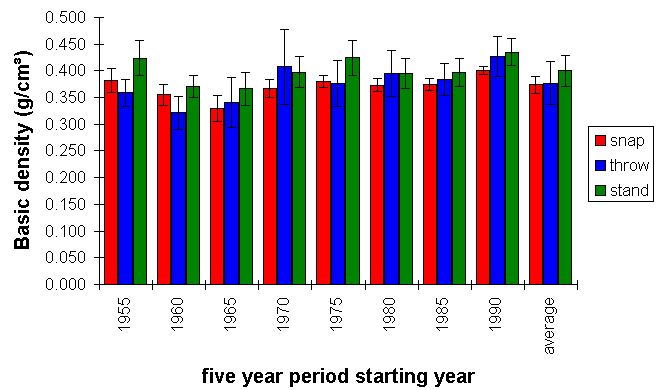Basic density (i.e oven dry weight/water swollen volume) was calculated for blocks of wood containing approximately 5 growth rings. Working from the bark inwards, these blocks represented the wood produced between 1990 and 1995, 1985 and 1989, 1980 and 1984 etc.
The data reveals a general trend of increasaing density from pith (at the left of the figure) to bark (at the right hand side). The different coloured bars represent the mean values for trees of each damage type. The error bar represents +/- 1 standard error.

Overall, the average values are very similar and not significantly different. However, what is interesting is the data for the outer most wood (from 1985 to 1995). This wood is located in the outer part of the tree, and will be subjected to the greatest loads when the stem is bent by the wind. The strength of this wood is therefore liekly to be much more impoprtant than the strength of the wood in the centre of the tree where bending stresses are smaller.
It can be seen that the snapped trees have an avrerage density slightly lower than either the standing or the overturned trees. This is the opposite trend to that found in the trees from Hamsterley forest.
This patternt also reflects the general pattern of stem shape. It appears that stem breakage is associated with low density trees at this site, but these trees are also relatively "fat", suggesting that the presumably weaker wood is offset by being present in greater quantity than either the undamegd or overturned trees.